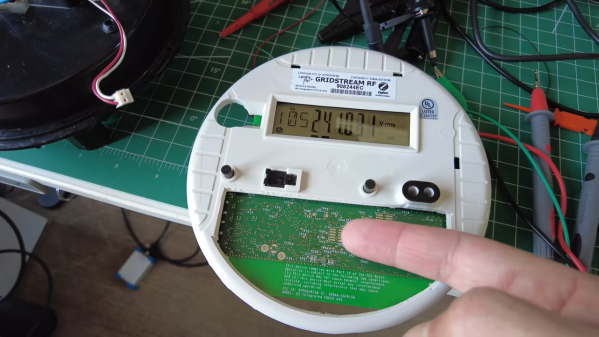When the widget you’re working on is powered by a battery or a USB charger, running it on the bench is probably pretty safe. But when the object of your reverse-engineering desire is a residential electrical meter, things can get a little dicey.
Not that this elevated danger level has kept [Hash] from exploring the mysteries presented by smart meters. Still, with a desire to make things a little safer, he came up with a neat trick for safely powering electrical meters on the bench. [Hash] found that the internal switch-mode power supply on the meter backplane was easy enough to back-feed with a 12-volt bench supply, rather than supplying the meter with the full 240-volt AC supply it normally gets when plugged into a meter base (these are meters for the North American market, where split-phase 240-volt is the norm for residential connections.) But that wasn’t enough for the meter — it powered up, but stayed in a reset state without fully booting. Something more was needed to bring the meter fully to life.
That something proved to be a small AC signal. Normally, a resistor network divides the 240-volt supply down to about 3 volts, which is used by the sensing circuit in the meter. [Hash] found that injecting a 60-Hz, 600-mV sine wave signal with about a 3-volt DC bias into the sensing circuit was enough to spoof the meter into thinking it’s plugged into the meter base. The video below has a walkthrough of the hack, and some nice shots of the insides of the meters he’s been working with.
[Hash] has been working with these meters for a while now, and some of the stuff he’s learned is pure gold. Be sure to check out his 2021 Remoticon talk on meter hacking for all the fascinating details.
Continue reading “Tricking A Smart Meter Into Working On The Bench”













